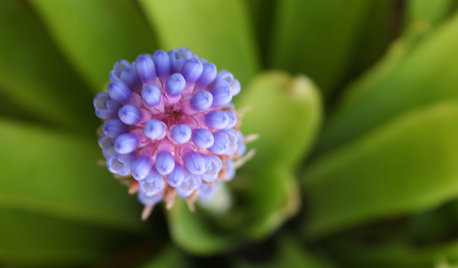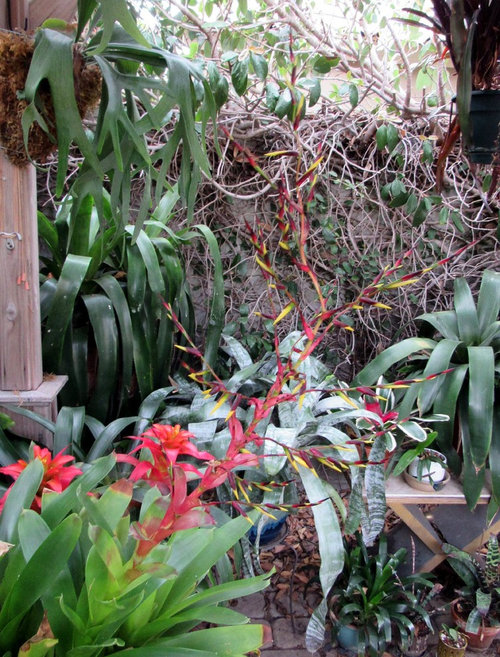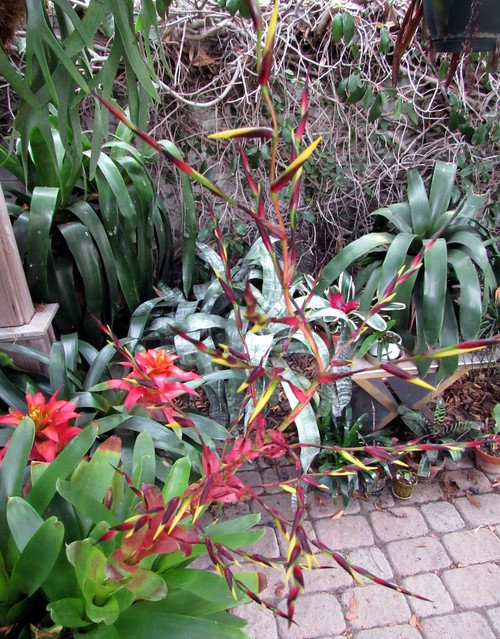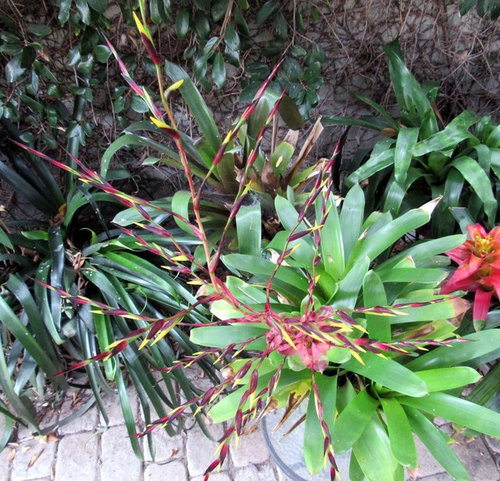This started putting out its spike around July 1, but the flowers are very slow to develop and open. I think they still are not yet completed open. When the spike first came out, it had a lot of dirt on it, but someone here (I cannot find the thread now) told me that that was normal, and now it is barely noticeable. This was a fairly expensive bromeliad for me ($60 at Rainforest Flora), and it was not in bloom when I bought it, but they told me it would make spectacular flowers. So far I am not that impressed - I have cheaper ones that I think are more showy, but it is beginning to grow on me, and it seems to be a good grower, as it already has more pups. I have it in my pergola at the moment, but I think it could handle the sun in my front yard, which is north facing. I'll keep it in the back for now.
I'm beginning to appreciate the lacy structure that it has, especially since it stand upright and does now droop like the billbergia I have. Also, the billbergia flowers do not last that long, and this one is lasting for months. It's difficult for me to photograph, however, in its current setting.
I know this one is popular in Australia because of Paul's thread. I'm hoping to have clumps like his eventually, and I'm not sure where to put them, due to my soil conditions.











splinter1804
Lars/J. Robert Scott
Related Professionals
Brooklyn Center Landscape Architects & Landscape Designers · Kailua Landscape Contractors · New Cassel Landscape Contractors · North Highlands Landscape Contractors · Severna Park Landscape Contractors · Shoreview Landscape Contractors · Wilsonville Landscape Contractors · Baileys Crossroads Landscape Contractors · Madison Fence Contractors · Channahon Fence Contractors · Olney Fence Contractors · Tucson Fence Contractors · Zachary Fence Contractors · Cedar Rapids Siding & Exteriors · Oregon City Siding & Exteriors